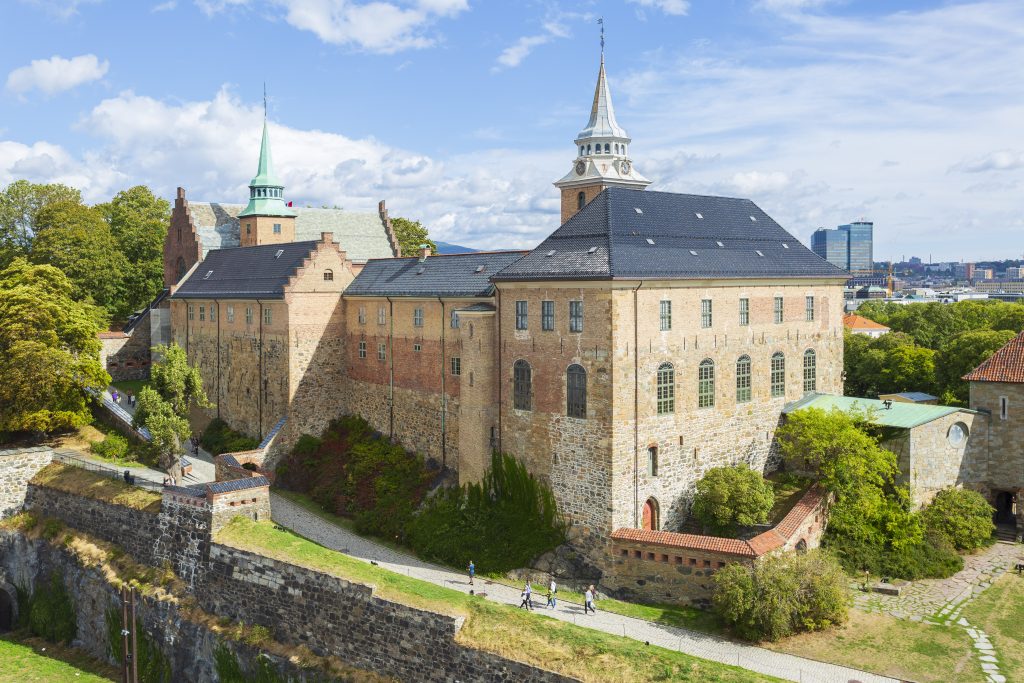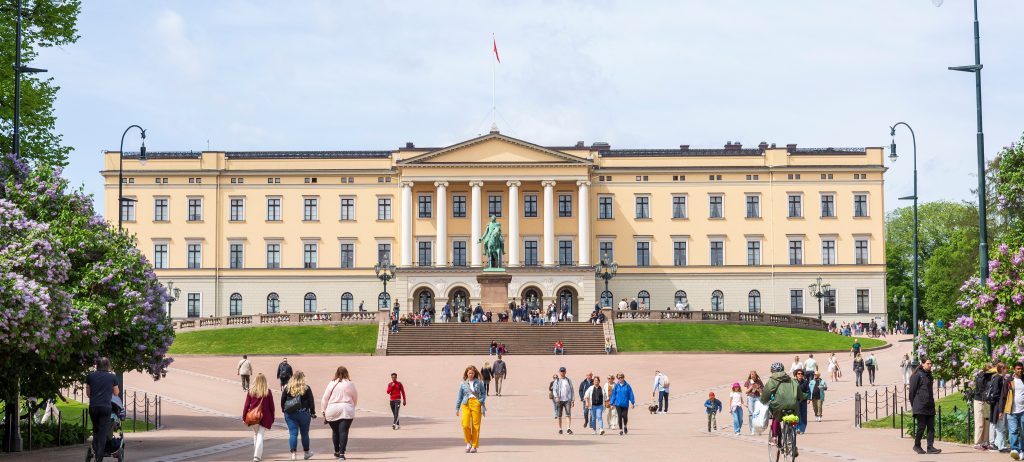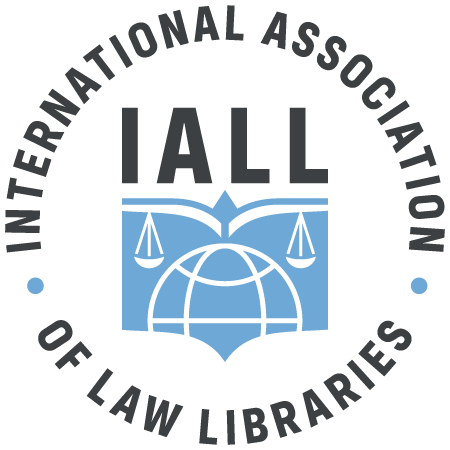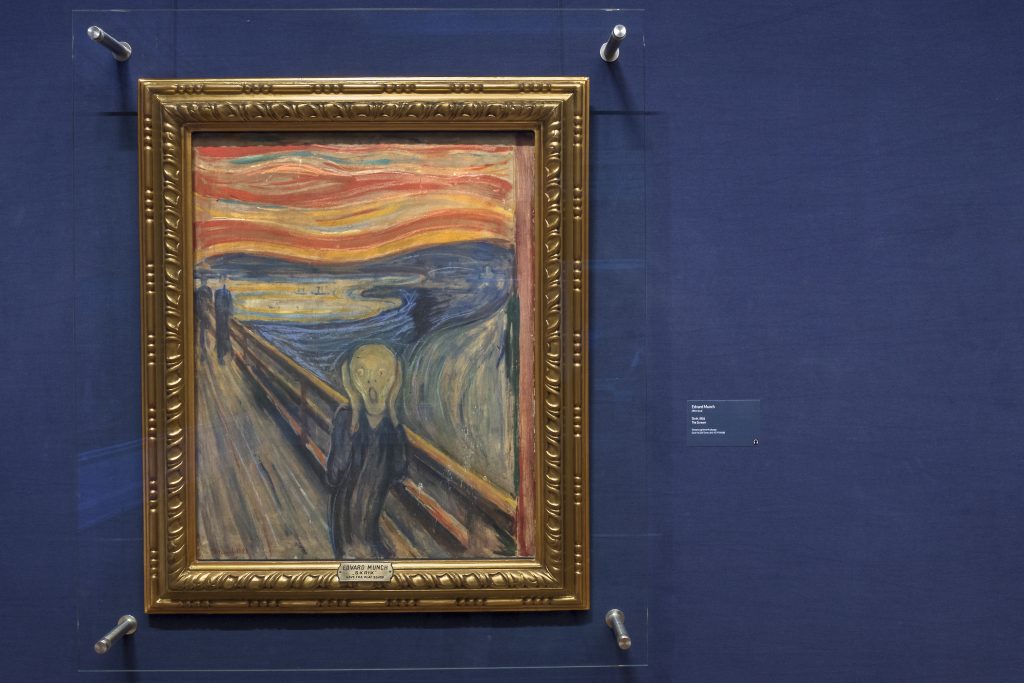The centre of Oslo is quite compact, and exploring it by walking is a pleasant experience. The city centre proper is for the most part dominated by businesses and offices, and is surrounded by more varied mixed residential areas. Major shopping areas as well as many museums and other attractions are located here, but it is by no means purely a tourist trap.
On this page you will find a quick guide to major sights near the venue. For more detail, we have compiled some information on how to explore Oslo, where to go shopping, and where to dine and drink.
Feel free to ask the local planning committee if you have any questions about your stay in Oslo.
Sights near the venue
Akershus Castle and Fortress
Situated in the middle of central Oslo, 15 minutes walk from the Conference Venue, is the Akershus Castle and Fortress from the 14th century. It is a must see and a beautiful place to explore Oslo’s history. The fortress is surrounded by green areas and the Oslo fjord. The fortress has been at the center of the nation’s growth and development for 700 years. The area offers a unique historical environment and cultural experiences. Guided tours are available for the castle interiors and the fortress grounds, both of which are highly recommended.

Photo: VisitOSLO/Didrick Stenersen
Karl Johans Gate
Karl Johans gate is the main street of Oslo. It stretches through the city center, from Oslo Central station to the Royal Palace. The parliament is located about halfway between the station and the palace. The street itself is pretty standard fare as far as high streets go, but things get more interesting by simply taking a right or left turn or moving to one of the parallel streets. Many high end shops are located in Akersgata, Nedre Slottsgate, and Øvre Slottsgate. In Prinsens gate you will find smaller brands and some independent shops as well. Three major shopping centres worth visiting are located on or near Karl Johans gate: Paleet, Eger, and Oslo’s only real department store, Steen & Strøm. Other major shopping streets nearby include Grensen, Stortorvet, and Torggata.
The Royal Palace and the Royal Gardens
Situated on a small hill just a few minutes from the venue is the Royal Palace. Small by any royal standard but interesting still, a guided tour of the interiors is worth considering. The old stables host regular art exibihitons, and the small park and gardens around the palace are a popular attraction for tourists and locals alike.

Photo: VisitOSLO/Didrick Stenersen
Museums
The Munch Museum in Bjørvika is well worth a visit. The tram that stops outside the venue will take you pretty close to the museum (No. 19 direction Ljabru, get off at Bjørvika). Walking there is a nice option, too: Follow the waterfront around the fortress, past the Central Station and across a small bridge behind the Opera House (approx 30 mins. at a leisurely pace). About halfway around the fortress, at the very tip of Vippetangen, stop for a drink or a bite to eat at Vippa.
Right across from the venue you will find the museum of history. A few minutes further on lies the new National Museum, which displays both art, architecture, and design. From here, continuing along the waterfront at Aker Brygge will take you directly to the Astrup Fearnley museum of contemporary and modern art.
Photo: VisitOSLO/Didrick Stenersen

